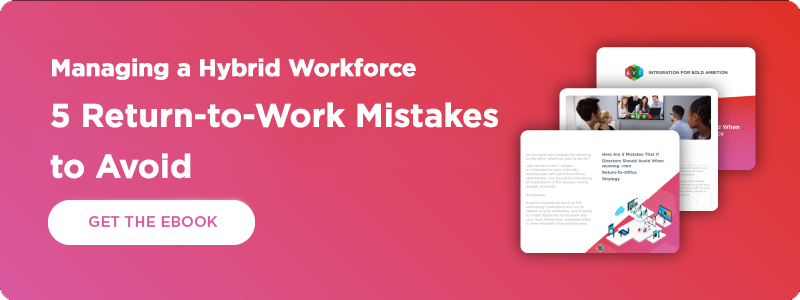Editor's note: This is the first of a two-part blog series on hosting professional-level virtual events at a time of heightened competition.
The pandemic spurred a rapidly growing output of virtual events as replacements for in-person trade shows, national sales meetings and town hall events. In the year ahead, 90% of event marketers plan to include virtual events in their strategy — a dramatic increase from 26% prior to COVID-19.
Some reports show more than half of organizations are hosting more virtual events and webinars. Webcasting platform ON24 saw a whopping 330% increase in webinars on its platform.
Beyond adapting in-person events to a virtual platform, the challenge to many organizations is webinar fatigue. Many attendees feel burnt out from the inflated number of virtual meetings and webinars they attend day after day (after day!).
While there are many contributing factors to this phenomenon, part of the reason for the growing fatigue has to do with the quality of virtual events. Too many webinars and virtual experiences fall flat. At the core of the problem is the technology. The systems to power these events often don’t reflect the professional image most organizations want to deliver.
Webinars increased by 330% during the pandemic, according to ON24.
Ultimately, they fail to accomplish what organizational leaders hope for, like improved brand awareness, prospective customer opportunities, or fostering a more connected workforce.
What attendees crave is an experience — one that rivals the visceral feelings that only in-person shows can evoke. When done right, virtual events create connections and opportunities for organizations like few other tactics can. That’s why 85% of executives and leaders believe events are critical to the success of the organization, with as many as 60% saying it’s the leading channel to achieve business goals.
Technology plays a critical role in the success of virtual events. The organizations planning to host virtual events must consider how their existing infrastructure helps or hinders registrations, retention, and engagement. They must decide if their goal is to showcase a professional-level virtual event — or stay the course with a stale and amateur experience.
In this blog post, you’ll learn about the technology and best practices to host broadcast-quality virtual events.
Start with Your Goals for the Virtual Event
Watch this video to see how AVI Systems approaches virtual events, with the goal to elevate content beyond a ho-hum webinar.
With more virtual events hitting the market, attendees have higher standards for quality. Attendees won’t find the run-of-the-mill talking head experience up to par anymore. Organizations need to aim higher.
Shopify’s Broadcast Lead Zack Duncan says his team strives to “wow” the audience with every broadcast and deliver an experience that rivals an in-person show. “It’s something that makes our [audience] stop, take notice, and walk away remembering what they saw,” he said in an article.
Shopify, an eCommerce platform, hosts numerous internal and external live productions on a monthly basis. Because of this, the internal broadcast team knew they needed to elevate their production standards to deliver a truly remarkable virtual event to audiences around the world. They aimed to create an immersive experience and help people tuning in from any locale feel like they were sitting in the front row — whether it was for a product launch or an internal meeting.
While virtual events won’t outright replace in-person shows, the team at Shopify is close to the bullseye because of the careful process they took to identify their technical needs and event goals.
With the demand for virtual events increasing, it’s important to create a clear scope of work to understand what equipment, software platforms, or resources are needed to support the show.
When setting event goals, consider these five questions:
- What is your estimated number of attendees?
- How many speakers will participate in the virtual event?
- How long will the event run? (E.g., one hour or multiple days)
- What level of participation do you hope for during the virtual event?
- What supporting material will you need to show during the broadcast? (E.g., presentations, videos, or graphics)
Once the goals and expectations for the virtual event have been determined, it’s critical to align internal teams early on to adequately prepare for event day.
Preparation Will Play a Critical Role in Success
The marketing and communications departments must align with IT and production teams early in the process to secure the necessary equipment, ensure the network will sustain the broadcast, and schedule practice-runs with speakers and panelists.
PRO TIP: Develop a detailed show guide that provides timestamps for speakers, transitions, polls and more. A guide like this provides a clear visual to all who will support the virtual event, especially the broadcast professionals managing the production equipment.
Will You Need Live Support on Event Day?
Cuing dynamic visuals and seamless transitions between speakers require a skilled hand. Broadcast production technicians and engineers have a special skillset to achieve such polished results. If your in-house team needs help during the virtual event, consider how an outside production team can assist.
“Virtual events are a broadcasted experience and investments in production should reflect that,” writes Alysha Parker, event marketing manager at Bizzabo, in an article. “Just as you would hire an AV production team for your in-person event, you should expect to invest in AV resources for your virtual experience.”
Setting goals up front will help develop a sound technical infrastructure to support the type of virtual event that will engage an audience like a blasé webinar can't. These are the types of considerations an organization must consider to reach the desired outcomes.
In part two, learn about the technical requirements needed to pull off a professional broadcast. Read part two here.









